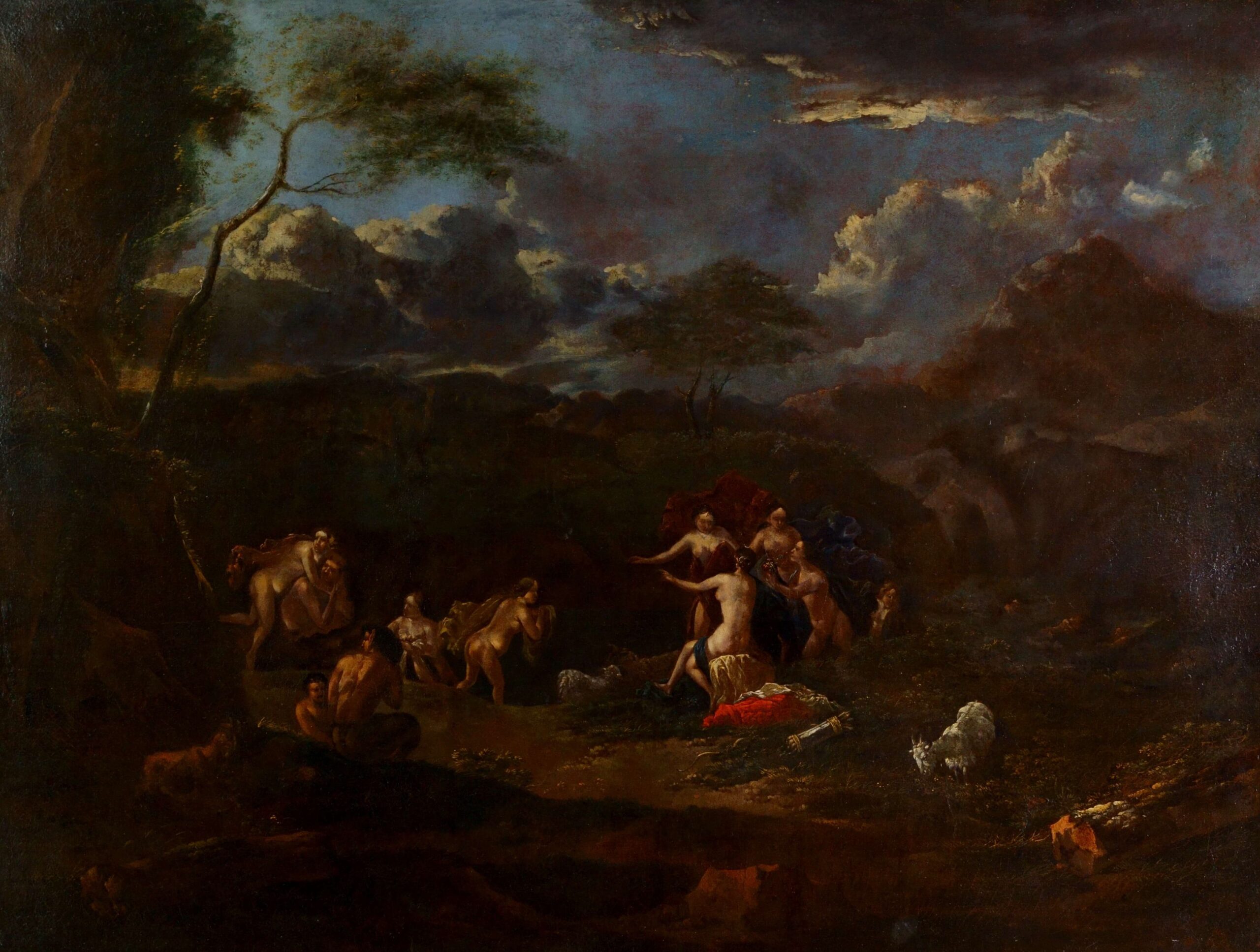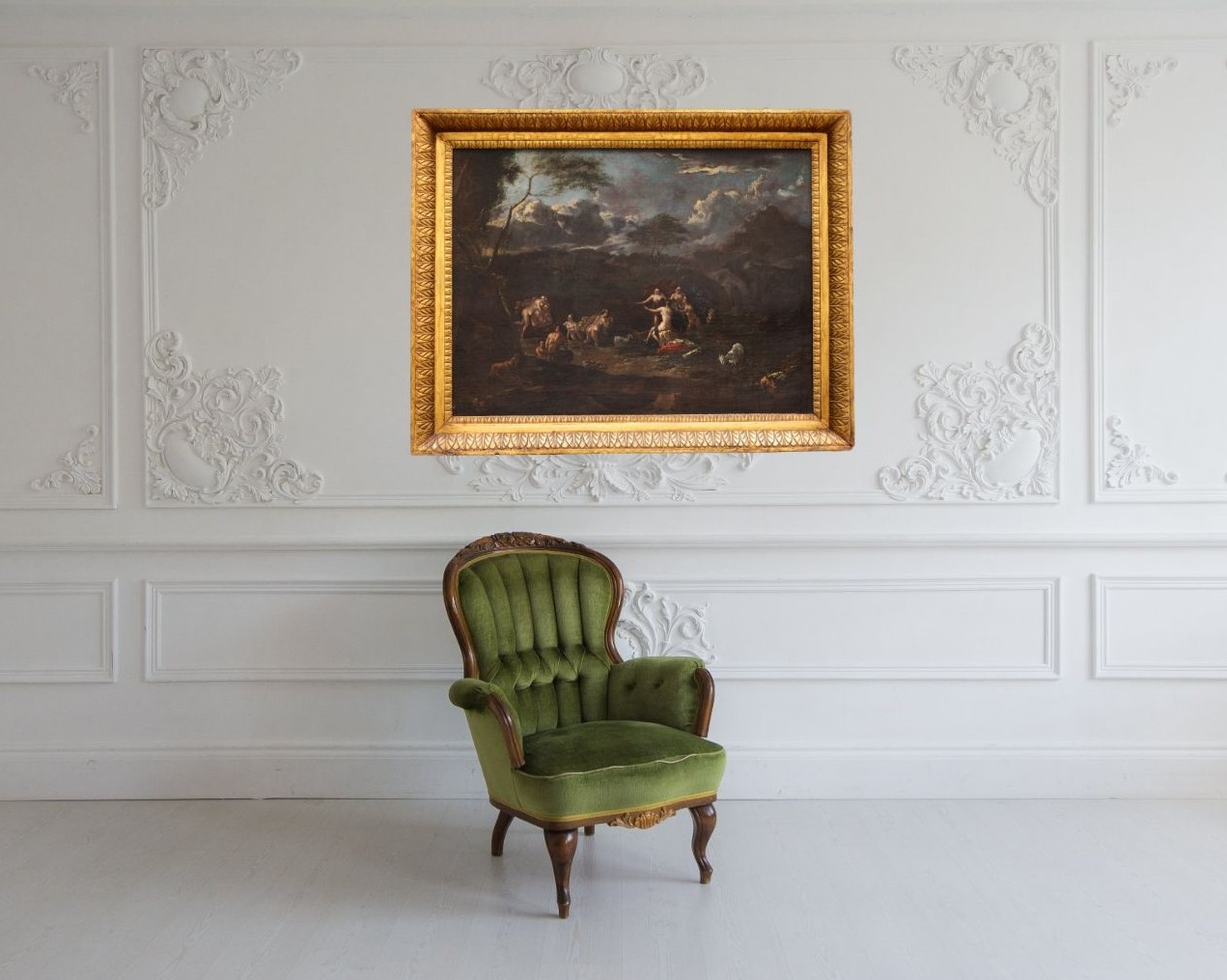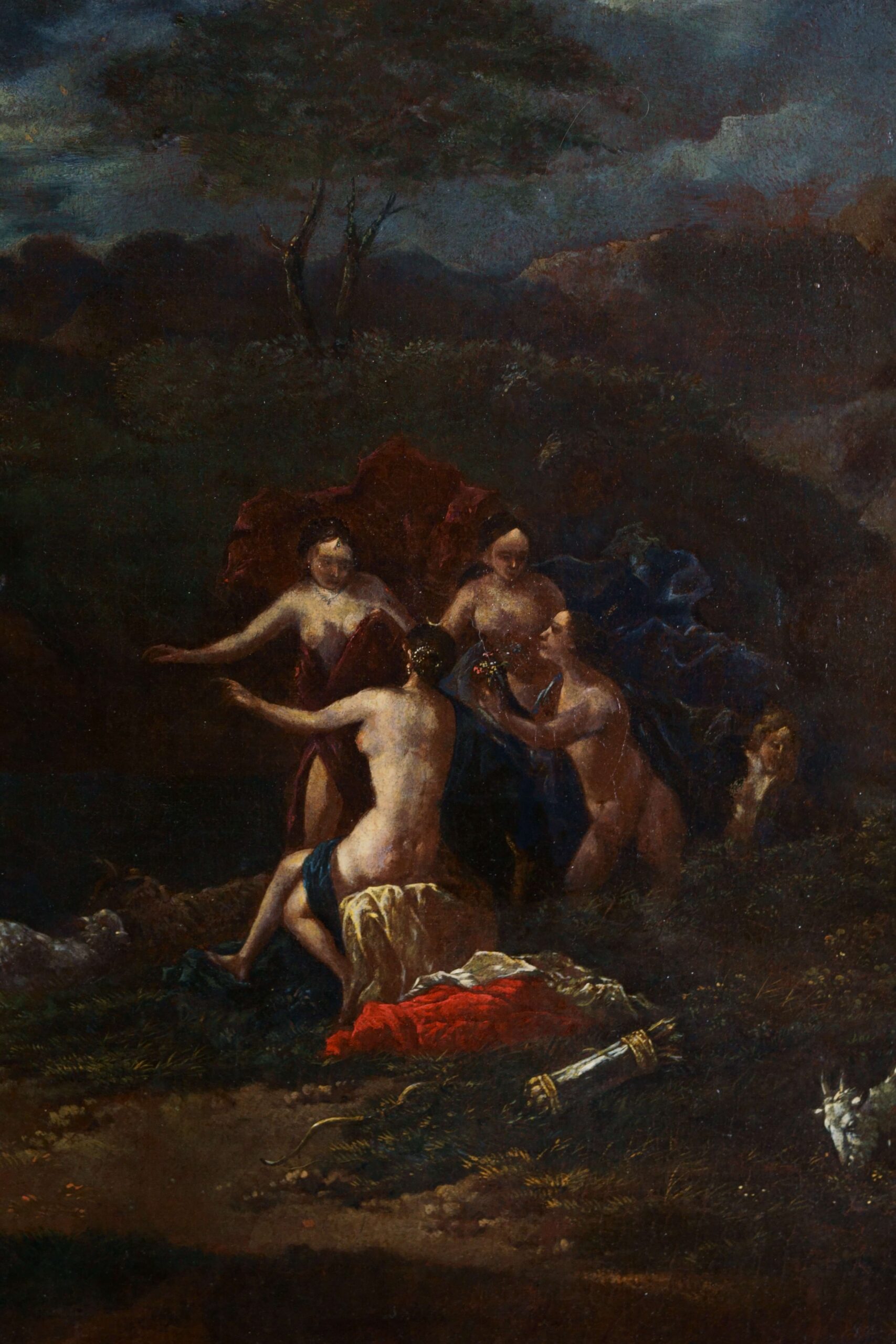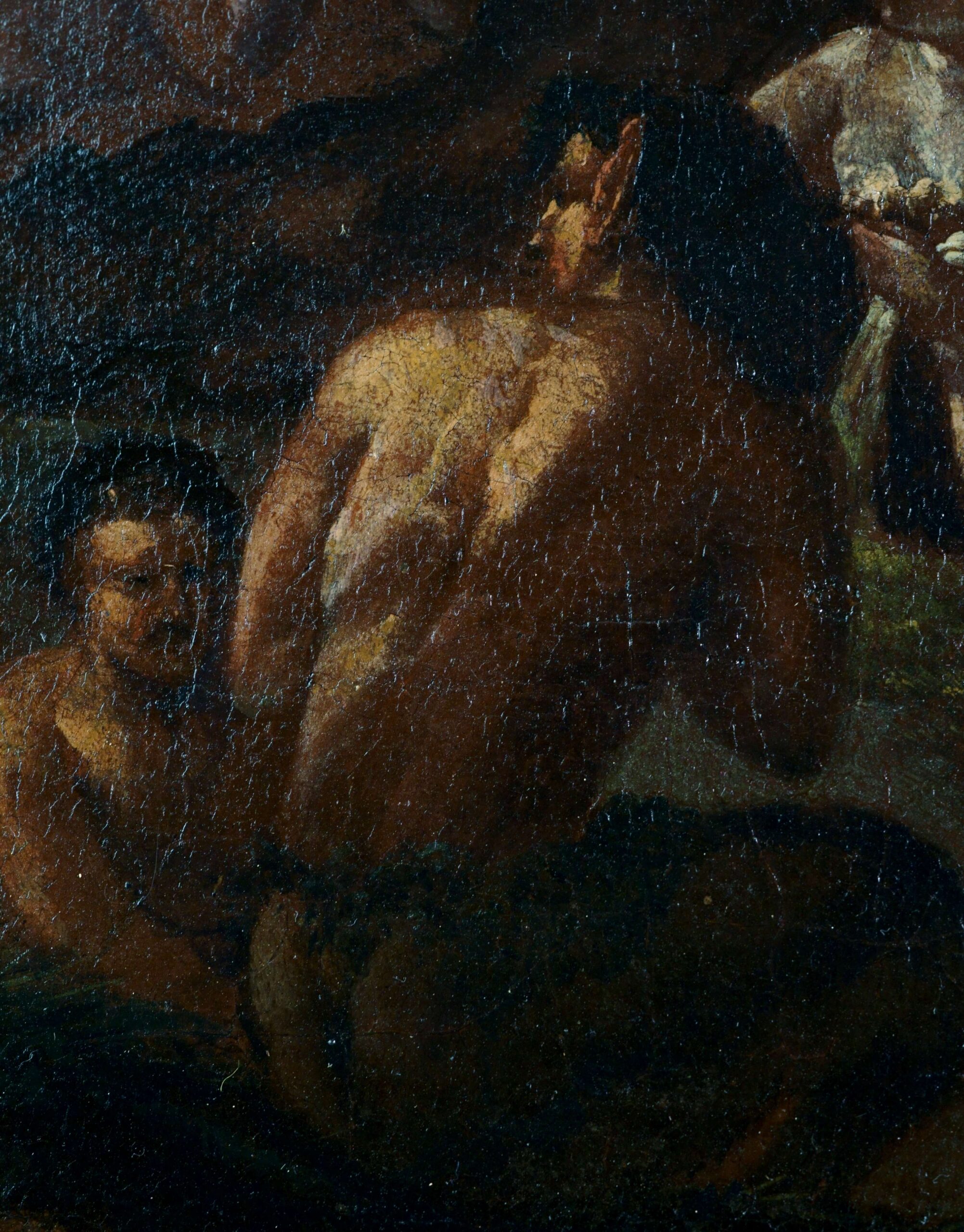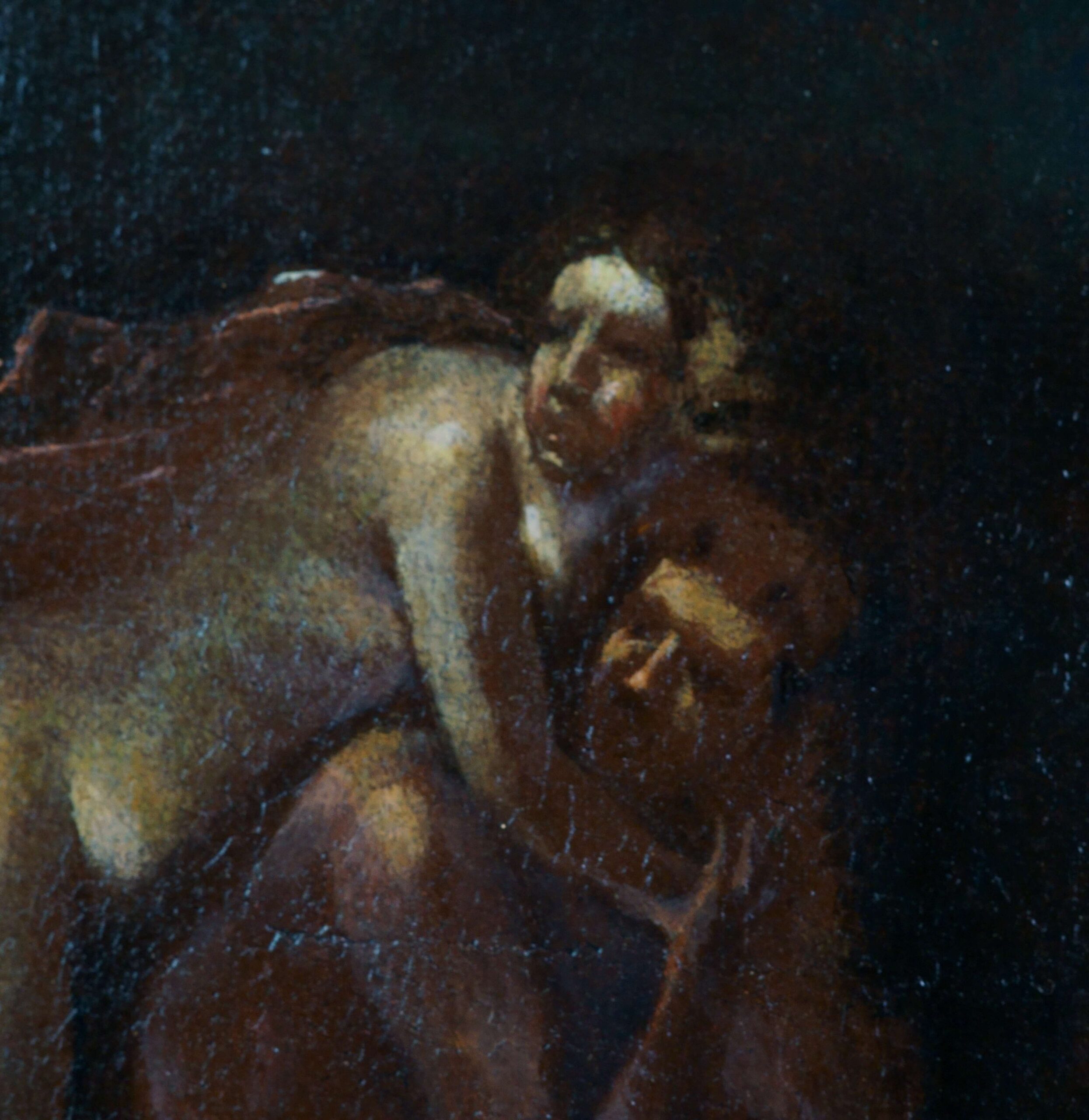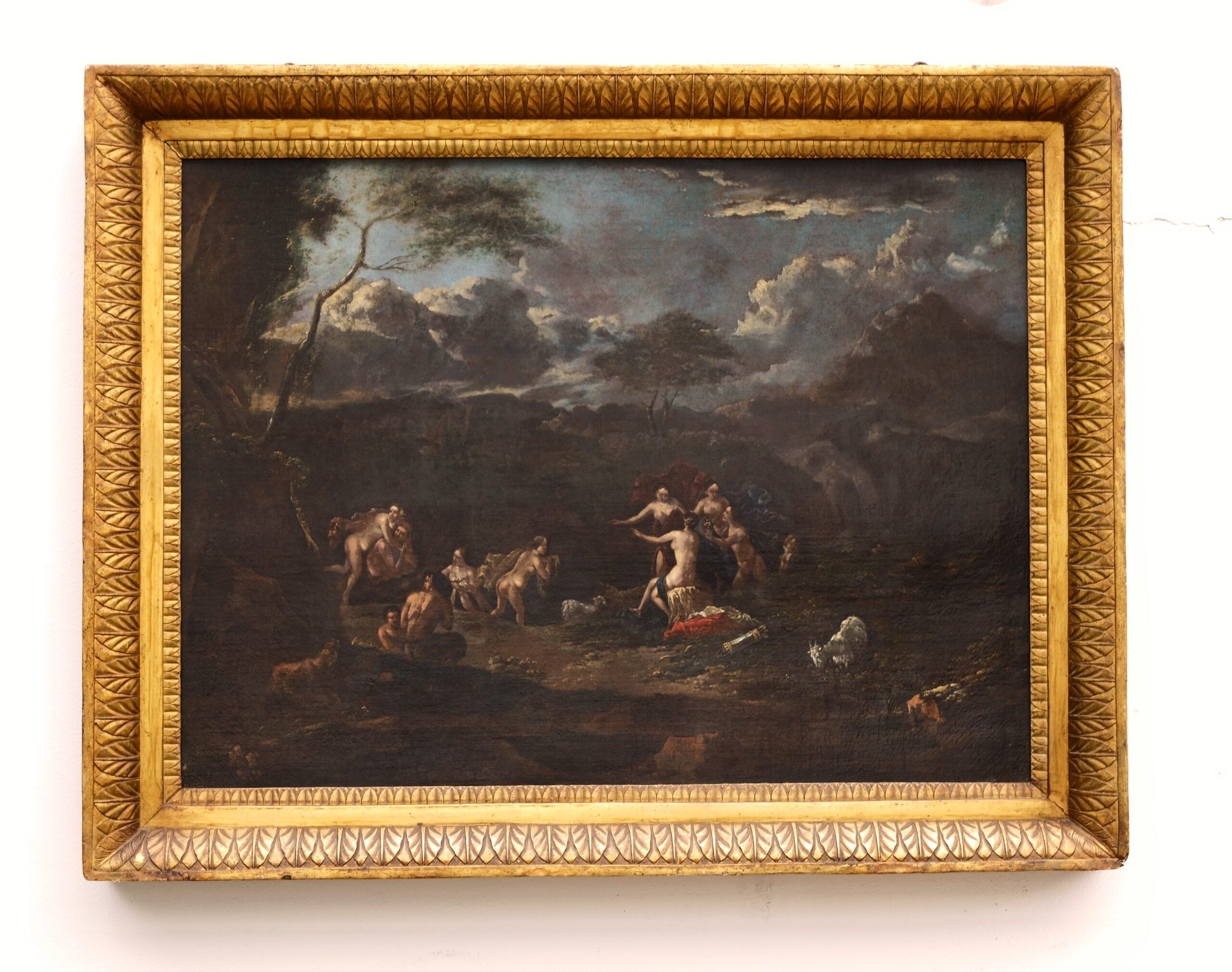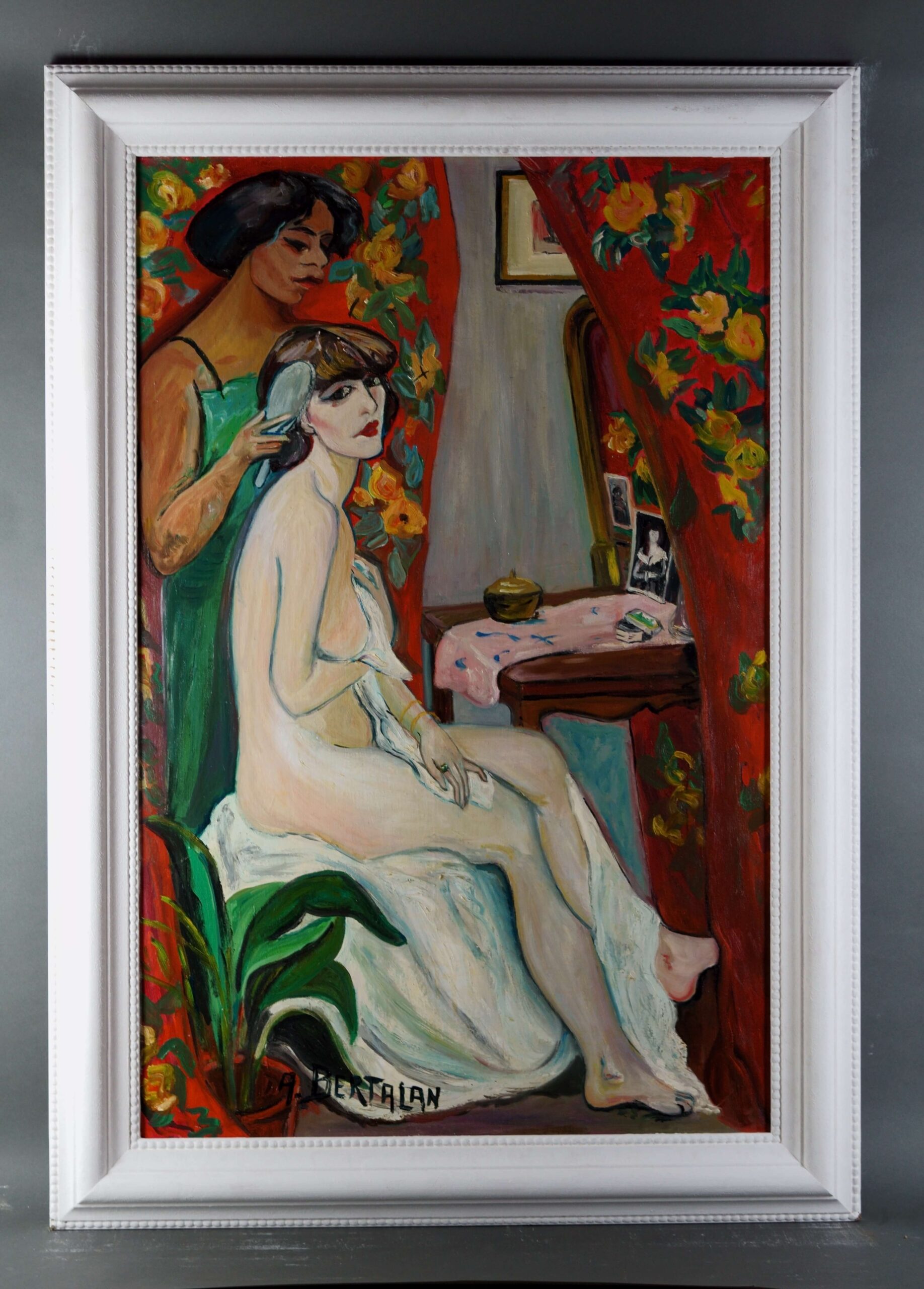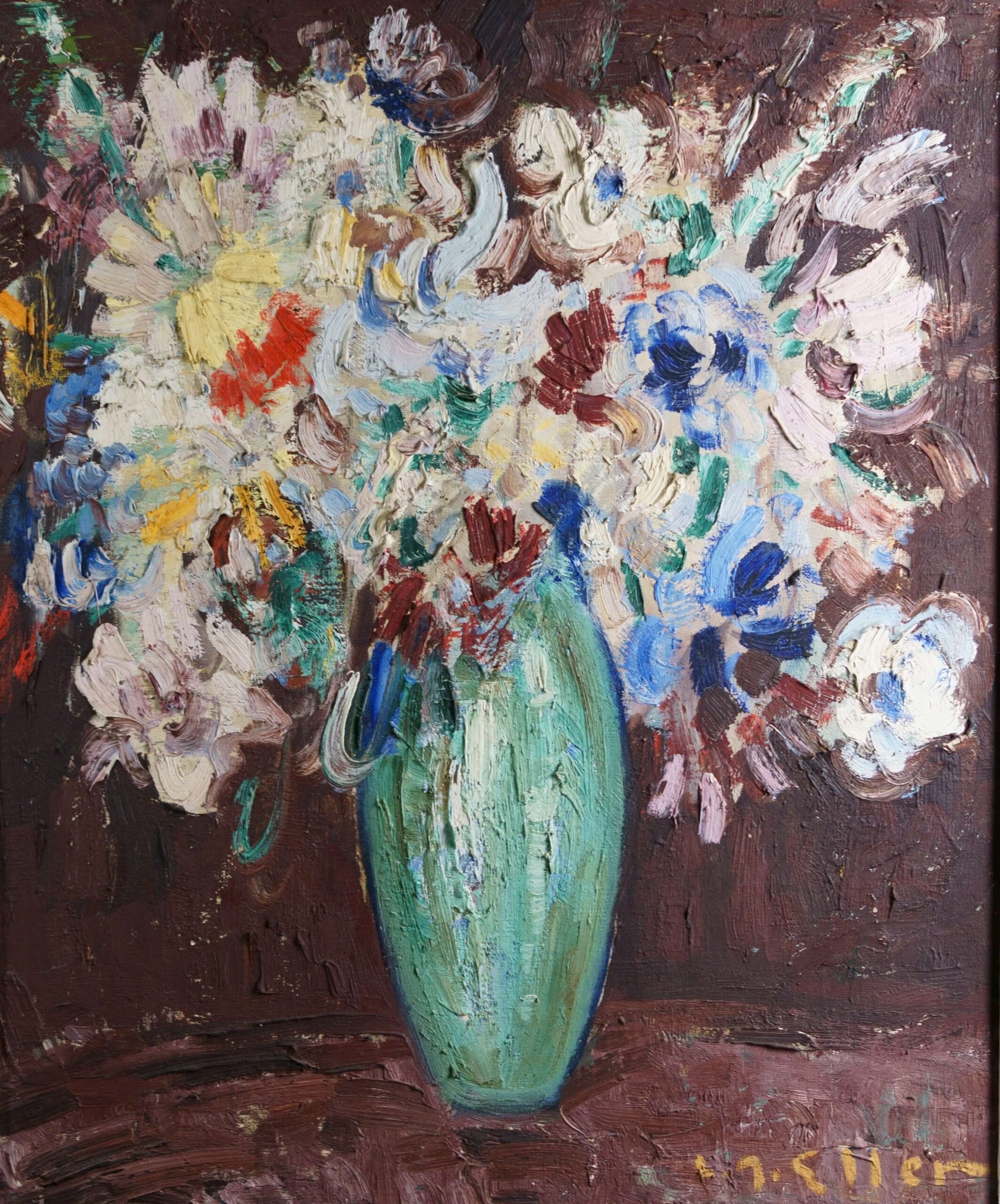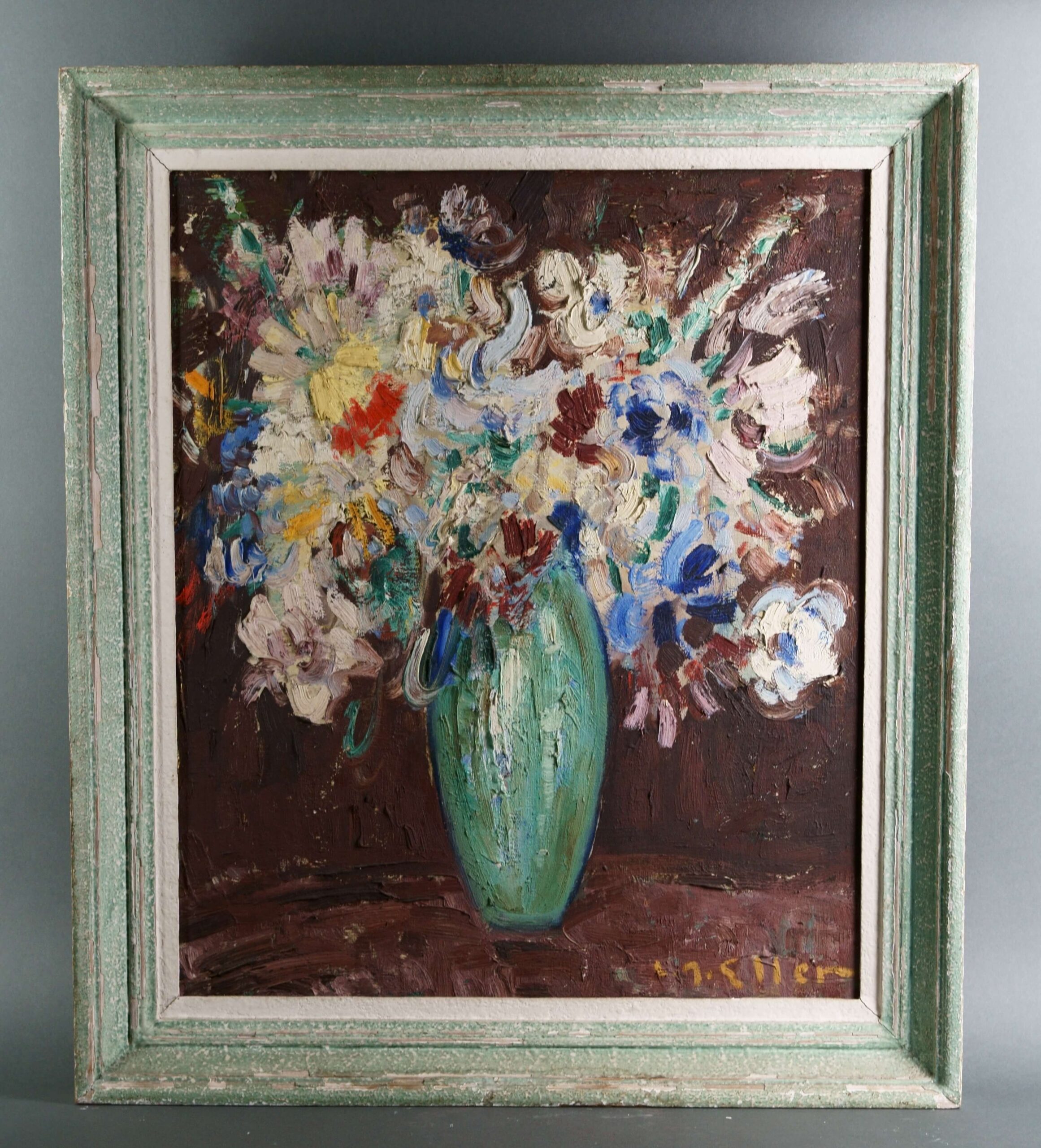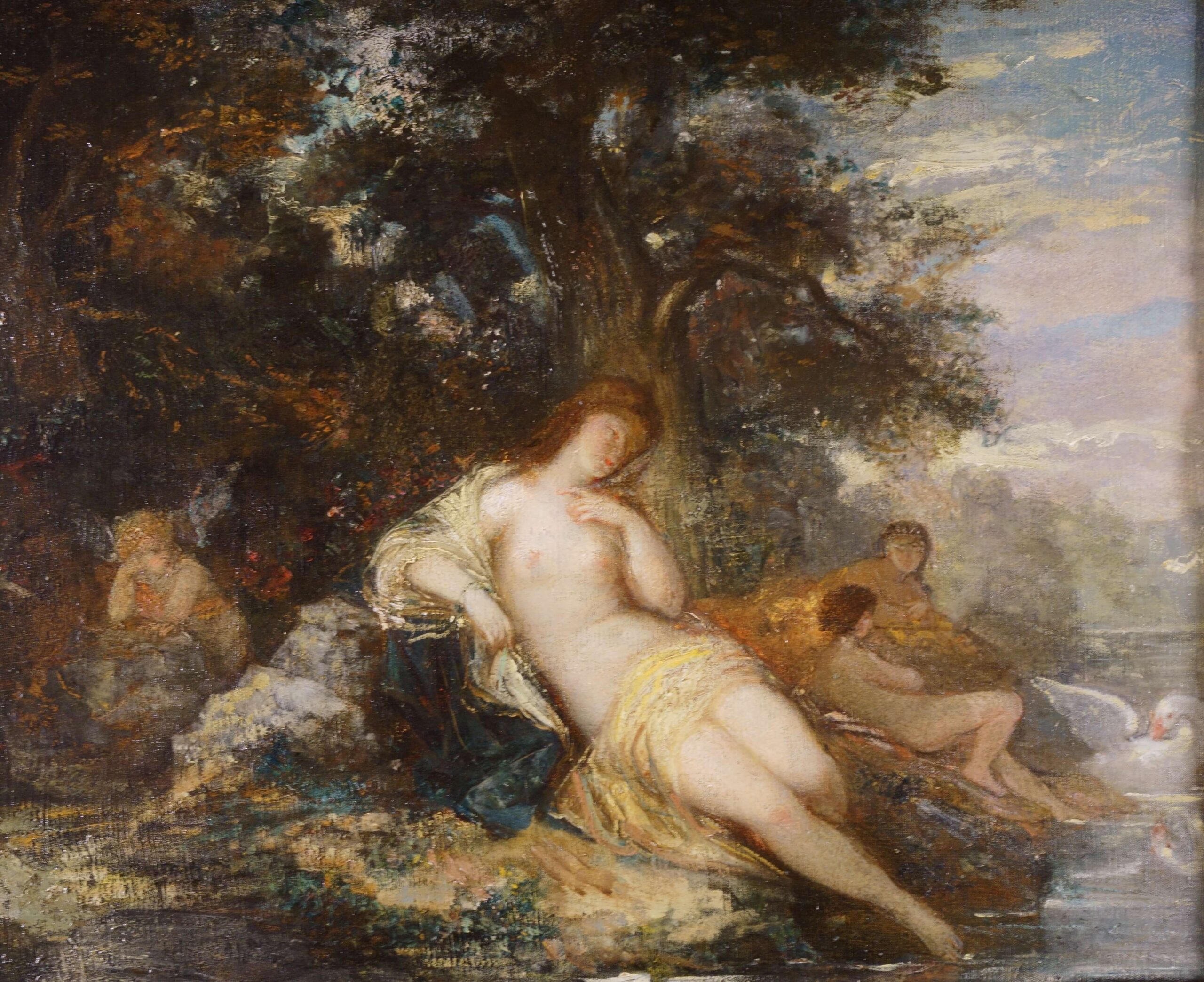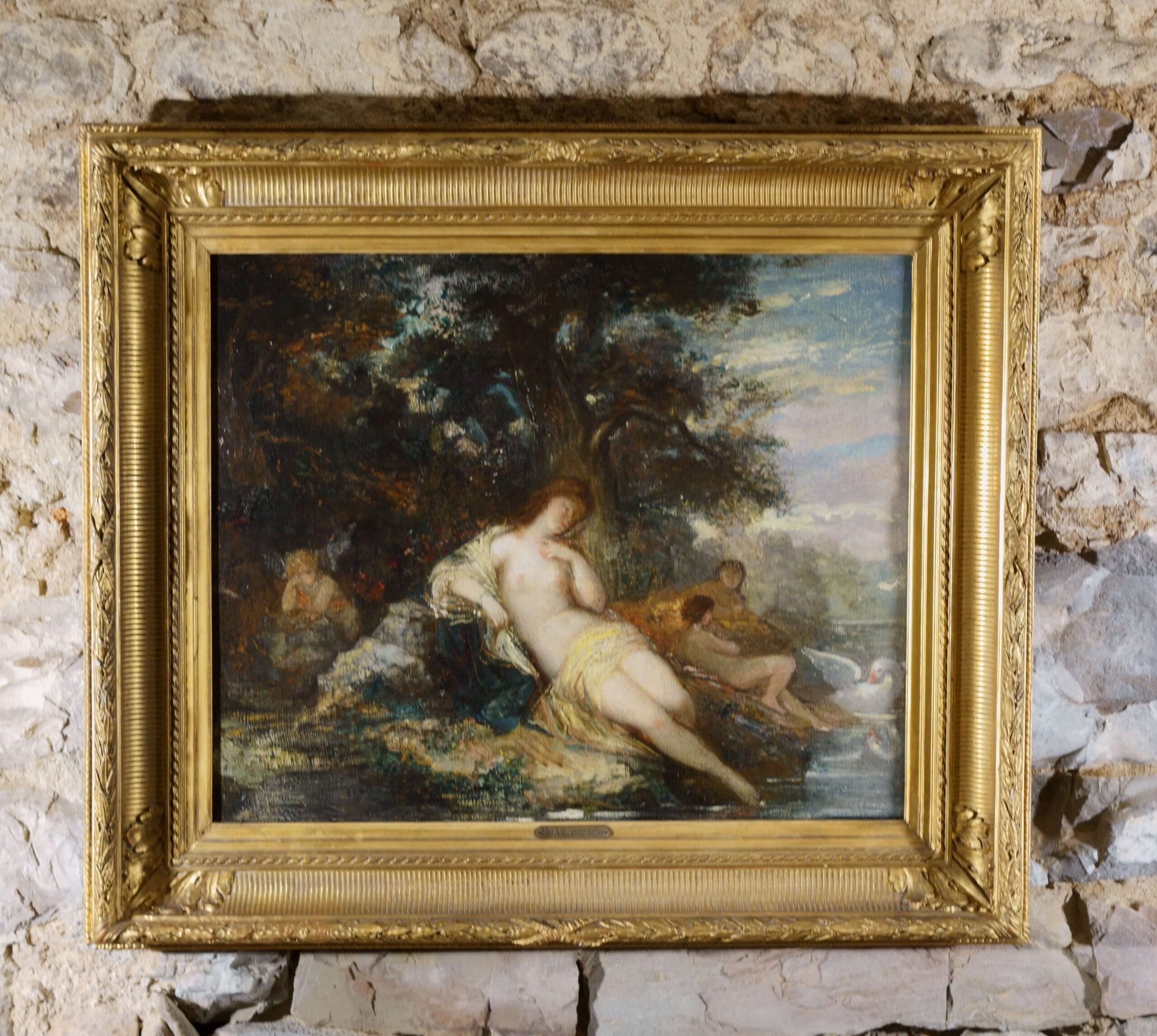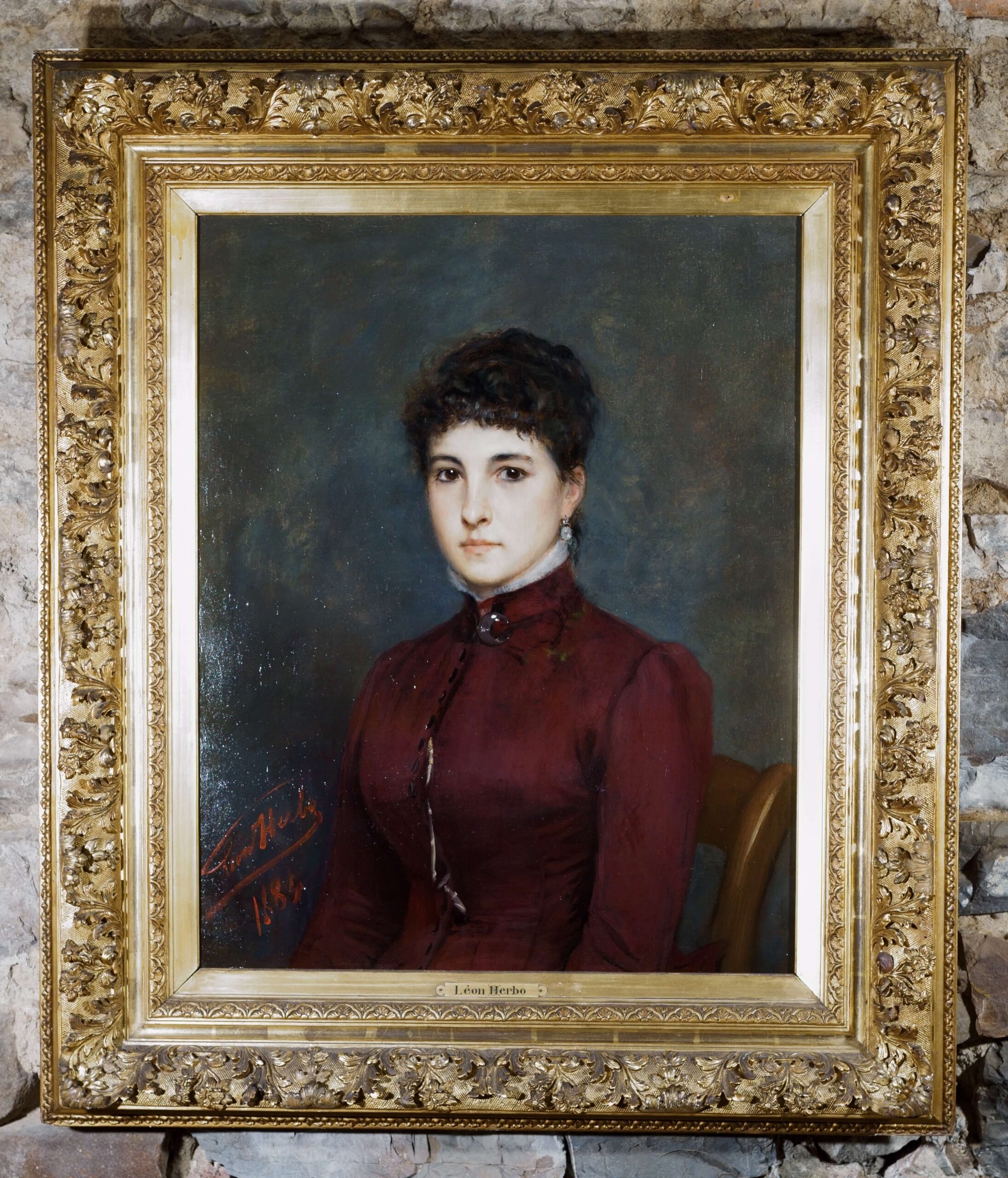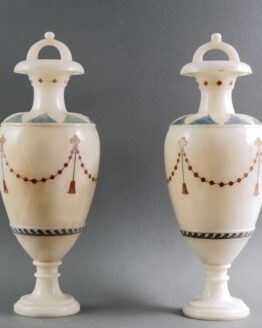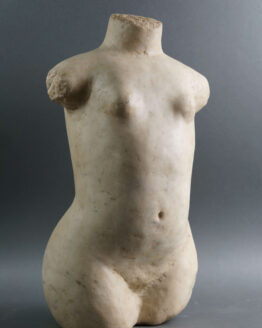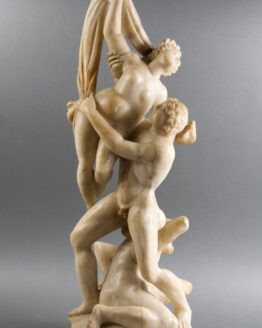Large mythological oil painting on canvas “Diana and her bathing nymphs”, Utrecht Italianate school, first half of the 17th century, entourage of Abraham van Cuylenburgh (1620-1658).
The scene takes place in a wooded landscape in dark tones, against a backdrop of a leaden sky: we are in the moment which precedes the discovery of Actaeon by Diana and her nymphs, who are bathing in a body of water. The goddess is in a central position, with her back, half-naked: we recognize her by the small moon she wears in her hair and the quiver placed behind her, as well as by her scarlet dress; a nymph offers him a crown of flowers but the goddess seems to indicate something in the clearing and the other nymphs and satyrs turn to look in the same direction, where Actaeon is hidden. The scene is animated by numerous characters and by a white goat in the foreground.
The subject comes from Ovid’s “Metamorphosis”: Actaeon surprises the goddess Diana and her nymphs while they are bathing in water and the goddess punishes him for seeing her nudity by transforming him into a deer and making him torn to pieces by his dogs.
The Utrecht School or painting in Utrecht is a reflexive pictorial tradition, to a certain extent a characteristic of its own during the period from 1580 to 1630, which is based on most Dutch villas, and marked notably by an artist – Abraham Bloemaert – and a movement – the Caravaggio school. A “center of pictorial art” for centuries, Utrecht played a leading role in this field in the northern Netherlands in the 15th and 17th centuries.
Within the Utrecht school, emerged the genre known as the “Italianizers”, a group of painters from Northern Europe, most of them Dutch, who traveled to Italy and who adopted a style and technique similar to those of the landscape painters. Italians of the period. These painters stayed for a long time in Italy, particularly in Rome, and worked there. The paintings of the Italianists show imaginary hilly landscapes, bathed in a clear and often golden light, imported from Italy, and which plays a leading role in these works. They are populated by small characters who, in the case of the first generation of these artists, participate in scenes representing most of the time biblical, mythological or literary subjects. The most important painter among these was Cornelis Van Poelenburgh (1594/1595-1667), whose style was followed by Dirck Van der Lisse (1607-1669), Abraham Van Cuylenburgh (c. 1620-1658) and Charles De Hooch (died 1638).
Abraham Van Cuylenburgh in particular has similarities with our painting: the dark background, the mythological subject often linked to Diana and her nymphs, the presence of animals. Many examples including: “Diana and Actaeon”, formerly in the Conrad Bugge collection, now in the Norwegian National Gallery in Oslo; “Diane and her companions” Royal Gallery of Art in The Hague and many others.
We can therefore attribute our painting to his entourage with certainty, to a painter very close to him and who took so much of his style.
Very good state of conservation, formerly re-lined. According to information provided by the previous owners, the painting was cleaned around twenty years ago. In an 18th century neoclassical Italian frame in gilded wood.
The painting is accompanied by our expertise as approved experts specializing in old painting.
Measures
Canvas 97 x 73 cm
Frame 108 x 83.5 cm


